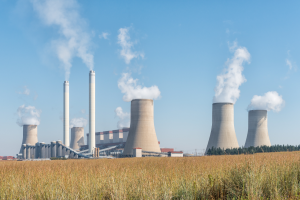Warning over petrol and diesel prices for the rest of 2023

The expected petrol and diesel price hikes on the cards for next week are trending slightly lower than in the middle of the month – but alarm bells are ringing over rising oil prices, which threaten to keep the pressure on for the rest of the year.
According to the latest data from the Central Energy Fund (CEF), petrol prices are currently showing an under-recovery of around 90 cents per litre (86c to 92c range), while diesel is at around R1.66 cents per litre (R1.64 to R1.69 range).
While these are still sizeable increases on the cards when prices are adjusted next week (4 October), the under-recoveries have come down from the region of R1.20 per litre and R2.00 per litre seen in the middle of the month.
The come-down is thanks to a slightly stronger rand over the last week, as well as a downward swing in global petroleum prices, which have been elevated in September due to rising oil prices.
The rand’s fortunes have been relatively mixed in September, trading in a narrow range for most of the month. Unfortunately for local importers, the range has been at weaker levels, between R18.80 and R19.20 to the dollar.
Spikes earlier in the month saw the rand go to almost R19.30 to the dollar, but it has since stabilised at an average of R19.00. Because the rand’s position is weaker than it was in August, the exchange rate has consistently contributed to an under-recovery in fuel prices this month, between 22 and 25 cents per litre.
Oil remains the largest pain point, however.
After starting the month at already high levels, global oil prices spiked to almost $97 a barrel around the middle of the month. Prices have been fluctuating above $90 after spending the preceding months between $75 and $85 a barrel.
Oil is currently trading around $95 a barrel, which is a slightly better position, on average, than a week ago, helping to ease the under-recovery somewhat. But prices remain high.
The main driver behind the higher oil prices at the moment is the artificial supply constraints being put in place by oil producing nations (OPEC) and Russia’s ban on the sale of all types of diesel fuel to all countries.
According to Bloomberg analysis, oil futures are set for their biggest quarterly jump since 2022 due to these constraints, with forecasts pointing to a shortfall of as many as 3 million barrels a day in October.
The rising oil prices have brought talk of $100 a barrel back among analysts – however, Bloomberg noted that the rally has been stalling, and the oil cartels would have to extend curbs into 2024 to keep prices high.
Isaah Mhlanga, chief economist and head of research at RMB said that risks for future surges in the oil price remain high – particularly with Europe entering its winter season, which will push up demand.
“One cannot discount the potential for Russia to weaponize the oil industry, with significant consequences for the global inflation trajectory and central banks’ monetary policy outlook,” he said.
Rising oil prices will not only put pressure on consumers and households directly through higher pump prices but also indirectly through inflationary pressure as businesses and industries take on the costs.
The pressure also extends to Eskom, which relies heavily on its diesel-powered generators to keep the lights on.
The Department of Mineral Resources and Energy will publish the official petrol and diesel prices changes for October ahead of them being implemented on Wednesday, 4 October.
Read: How much more you’re paying for petrol, electricity and food in South Africa versus a year ago


















